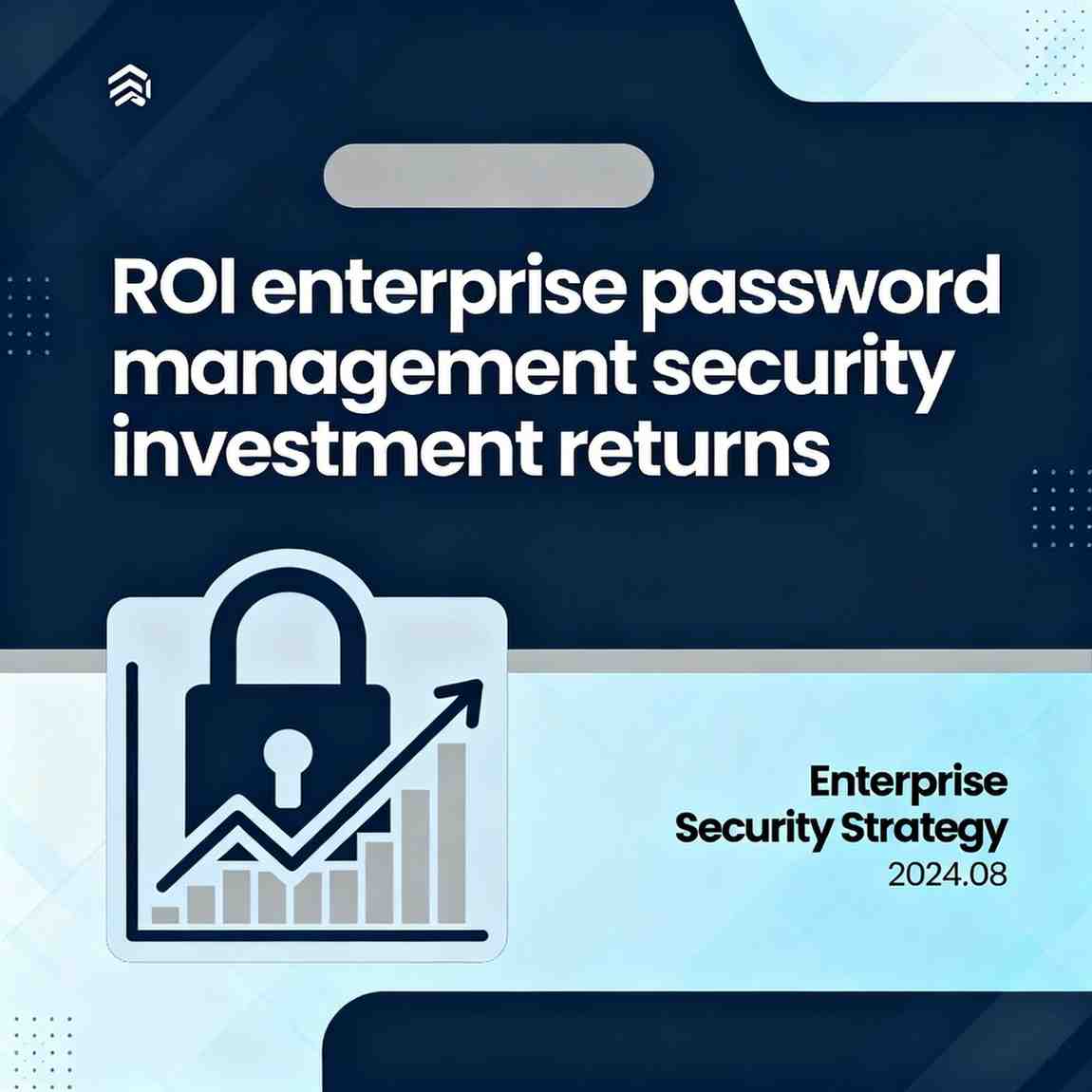


Discover how enterprise password management boosts security, cuts IT costs, and delivers measurable ROI for your business.
In today’s digital-first business environment, cybersecurity investments are no longer optional they’re essential. One of the most fundamental, yet often overlooked, components of enterprise security is password management. From preventing breaches to improving workforce productivity, enterprise password management solutions can yield substantial returns. But how do organizations calculate the ROI (Return on Investment) of such tools, and what tangible benefits do they deliver?
This article explores the ROI of enterprise password management, helping security leaders and IT decision-makers understand the financial and operational impact of investing in this critical layer of protection.
Before diving into ROI, it’s crucial to understand the risks and costs that arise from weak password management.
Without enterprise-grade password management, organizations face recurring expenses and heightened risks.
Enterprise password management (EPM) is more than just a password vault. It provides a centralized system for securely storing, sharing, and managing credentials across the organization.
Key features include:
An EPM solution not only strengthens security but also directly contributes to productivity and compliance.
ROI is measured by comparing the benefits gained from an investment to the costs incurred. The formula is:
ROI (%) = [(Financial Benefits – Investment Cost) ÷ Investment Cost] × 100
To apply this to enterprise password management, organizations must identify both tangible and intangible benefits.
Implementing EPM reduces the likelihood of breaches caused by stolen or weak credentials.
Password reset requests are one of the most common IT support issues. Gartner estimates that each reset costs between $15–$70.
Time spent on managing, remembering, and resetting passwords is lost productivity.
EPM solutions provide built-in compliance reports, reducing audit preparation time and avoiding fines.
While harder to quantify, intangible benefits can be equally significant:
Let’s put the numbers together for a mid-sized enterprise with 5,000 employees:
Annual Benefits:
Total Benefits: $2,740,000
Investment Costs:
Total Costs (Year One): $550,000
ROI (Year One):
= [(2,740,000 – 550,000) ÷ 550,000] × 100
= 398% ROI
From year two onward, costs drop to ~$450,000 annually, pushing ROI even higher.
These real-world cases show that password management investments consistently pay off.
To ensure maximum returns from EPM, organizations should:
While enterprise password management provides strong ROI today, the future is moving toward passwordless authentication using biometrics, hardware tokens, and zero-trust frameworks. However, enterprises won’t become password-free overnight. Passwords will continue to exist in legacy systems, shared accounts, and third-party integrations for years to come.
Therefore, investing in EPM today not only delivers immediate ROI but also lays the groundwork for a passwordless future.
The ROI of enterprise password management is clear and compelling. By reducing breach risks, lowering IT costs, improving employee productivity, and ensuring compliance, EPM solutions deliver both tangible financial savings and intangible strategic advantages.
For organizations still relying on spreadsheets, sticky notes, or fragmented password practices, the question is not “Can we afford to invest in enterprise password management?” but rather “Can we afford not to?”
A 398% ROI case, as demonstrated, shows that the returns far outweigh the costs. In an era where cyberattacks are increasingly targeting human weaknesses, enterprise password management is one of the smartest and highest-yielding security investments a business can make.
